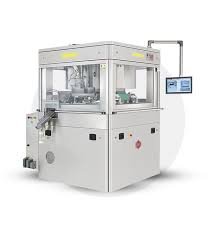A Comparative Study of Blow Fill Seal and Form Fill Seal in Sterile Manufacturing Processes

Blow Fill Seal (BFS) and Form Fill Seal (FFS) Technologies in Sterile Manufacturing
In sterile manufacturing, maintaining product sterility is paramount, particularly for pharmaceuticals, biologics, and medical devices that require strict contamination control. Two technologies that have revolutionized sterile packaging are Blow Fill Seal (BFS) and Form Fill Seal (FFS). These technologies are used in the automated process of filling and sealing sterile containers, ensuring product integrity while minimizing contamination risks.
1. Blow Fill Seal (BFS) Technology
Blow Fill Seal (BFS) is a highly automated, aseptic manufacturing process used primarily for producing sterile plastic containers (such as vials, ampoules, and bottles) for pharmaceuticals, biologics, and medical products. This process integrates three key operations—blowing, filling, and sealing—into a single, continuous production step, ensuring minimal handling and exposure to contaminants.
Key Process Steps of BFS:
-
Blowing:
-
The process begins by extruding a pre-formed tube or parison of plastic material, usually made of high-density polyethylene (HDPE) or polypropylene (PP).
-
This parison is then blown into the shape of the desired container using compressed air inside a mold. The mold determines the size and shape of the container.
-
-
Filling:
-
After the container is formed, it is moved to the filling station. Here, the container is filled with the sterile product, such as a liquid drug, vaccine, or biologic.
-
The filling process is done in a sterile environment, often under laminar airflow or in a cleanroom, to ensure that no contaminants enter the container during filling.
-
-
Sealing:
-
After filling, the container is immediately sealed using a heat-sealing process that fuses the top of the container, ensuring it is airtight and sterile.
-
The sealed container is then automatically ejected, ready for further processing, such as labeling, inspection, and packaging.
-
Advantages of BFS Technology:
-
Closed-System Process: The entire operation (blowing, filling, and sealing) occurs in a closed system, reducing the risk of contamination.
-
Cost-Efficient: The integrated process eliminates the need for secondary sterilization steps for the containers and helps reduce labor costs.
-
Sterility Assurance: By using a sterile environment for all stages of production, BFS provides a higher level of sterility assurance.
-
Flexible Container Sizes: BFS can handle different container sizes, including single-dose and multi-dose formats, for a range of pharmaceutical products.
Applications:
-
BFS is commonly used for packaging injectables, ophthalmic solutions, oral liquids, and other sterile pharmaceutical products.
2. Form Fill Seal (FFS) Technology
Form Fill Seal (FFS) is another widely used packaging technology, though it differs slightly from BFS in its approach. It is typically employed for packaging non-sterile and some sterile products in containers such as pouches, sachets, and trays.
Key Process Steps of FFS:
-
Forming:
-
FFS machines begin by unwinding a roll of film, usually made from polyethylene, polypropylene, or laminated material. This film is then fed into a forming station, where it is shaped into the desired container form, such as a pouch or tray.
-
-
Filling:
-
The formed containers are filled with the desired product (e.g., food, medical supplies, pharmaceutical products, etc.). In sterile applications, a sterile filling environment is used, often inside a cleanroom or sterile filling unit, to prevent contamination.
-
-
Sealing:
-
Once the container is filled, the top section is sealed using heat-sealing technology or ultrasonic sealing. This ensures that the filled container remains sealed and protected from external contamination.
-
The sealed packages are then automatically cut from the continuous film roll and are typically ready for inspection, labeling, and final packaging.
-
Advantages of FFS Technology:
-
High-Speed Production: FFS systems are highly efficient and can process large volumes of packaging at a fast rate.
-
Versatility: FFS can be used for a wide range of materials, including films for flexible packaging (such as pouches and sachets) or rigid containers (such as trays and cups).
-
Minimal Product Handling: Like BFS, FFS minimizes product handling by integrating forming, filling, and sealing in one continuous process, reducing the risk of contamination.
-
Cost-Effective for High Volume: The ability to handle high volumes makes FFS an economical choice for large-scale production, especially for consumer goods and non-sterile products.
Applications:
-
Food and Beverage Packaging: For pouches, trays, and vacuum-sealed packaging.
-
Pharmaceuticals: Some applications for non-sterile medications, over-the-counter drugs, and medical devices.
-
Medical Devices: Packaging of sterile medical components or disposable products.
Comparison Between BFS and FFS Technologies
| Aspect | Blow Fill Seal (BFS) | Form Fill Seal (FFS) |
|---|---|---|
| Application | Primarily for sterile packaging (injectables, ophthalmic) | Mostly for non-sterile products (food, medical devices, etc.) |
| Process Type | A closed system (blowing, filling, and sealing in one) | Separated forming, filling, and sealing steps |
| Sterility Control | High level of sterility assurance | Can be used for both sterile and non-sterile packaging |
| Efficiency | Highly efficient for small-to-medium batch production | Efficient for high-volume production |
| Container Types | Vials, ampoules, bottles | Pouches, sachets, trays, cups, bottles |
Conclusion
Both Blow Fill Seal (BFS) and Form Fill Seal (FFS) technologies play pivotal roles in the packaging industry, especially in the pharmaceutical and medical sectors. While BFS excels in providing sterile, high-assurance packaging for injectable and liquid products, FFS is versatile and efficient for a broader range of packaging applications. The choice between BFS and FFS largely depends on the specific needs of the product, production volume, and required sterility levels. Both technologies represent significant advancements in automated packaging, reducing contamination risks and enhancing production efficiency.
🎓 Discover one of the best Pharmaceutical Production courses available — click below to explore the course that’s shaping future Production skills.

